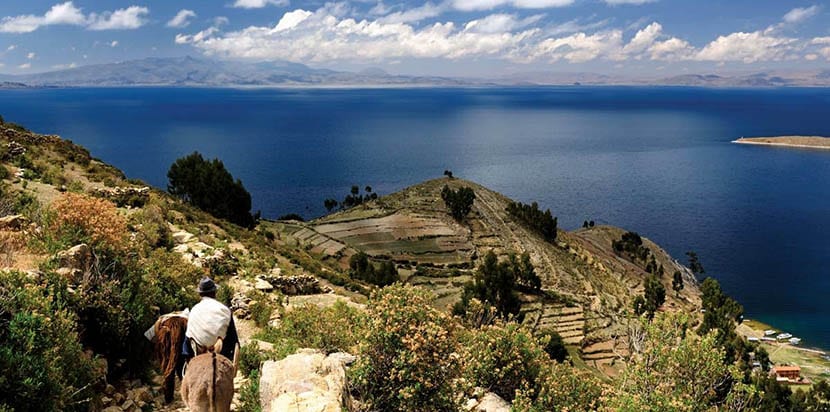
Why is the Tititica Lake? Because it is the highest navigable lake in the world and because it has been rooted in local culture for thousands of years. It is one of the most popular Peruvian tourist attractions in the world and if you go on a trip you cannot ignore it.
This beautiful water mirror is shared by Peru and Bolivia and among its most famous postcards is that of the indigenous boats that have plowed through it for centuries. We invite you to know it so here we leave you practical information to do so.
Lake Titicaca
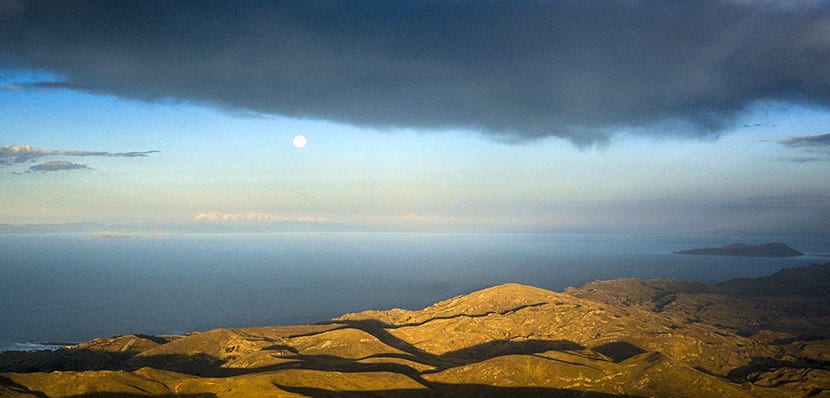
Peru has a larger part of the lake than its neighbor Bolivia. The lake has an average depth of just over 100 meters although it reaches almost 300 at its deepest points. Actually are two bodies of water between which there is a strait, the Strait of Tiquina, of 780 meters, which is crossed by boat. The waters have an average temperature of 13ºC so they are quite cool and change a lot with the seasons of the year. If you go in summer you will be able to witness some furious storm shaking its surface, for example.
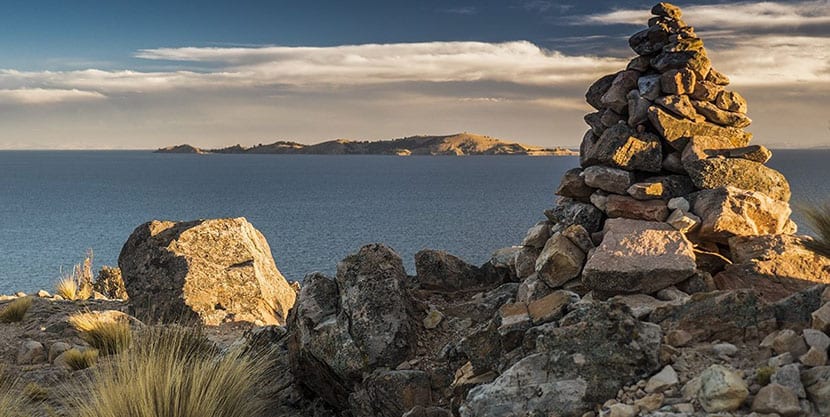
It is a lake whose waters are lost 90% due to evaporation, so there is really very little that drains into rivers. They are somewhat salty and very crystalline waters although in recent years there have been no shortage of areas contaminated by man. Obviously it has some beaches and many islands, natural and artificial. The artificial islands are an old classic of the lake and are made of reeds.
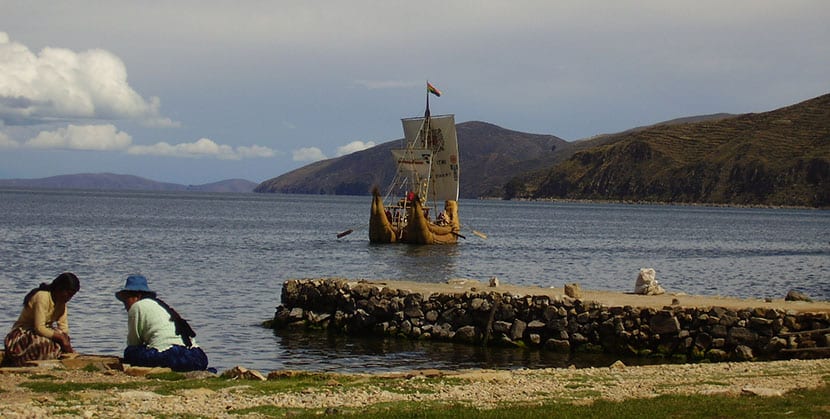
Is the islands of the uros, an ethnic group that lives from fishing and hunting and for centuries has built floating islands with cattails. The original islands are and have always been on the Peruvian side, but as they are a tourist boom in recent years they have also been built on the Bolivian side. Stroll in a "Caballito de totora"As they say to the boats of the Uros, it is something you can and should do.
Visit Lake Titicaca
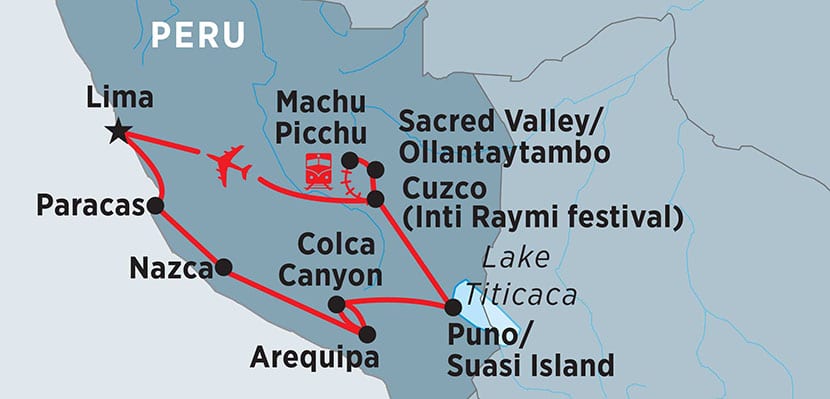
The lake can be reached from different provinces, eight in total and all located in the Puno region. Puno, then, is a great tourist destination and one of the most interesting places in South America.
The Spanish founded the city of Puno in 1668 so it is a great place to see the resulting melting pot of cultures. You may join Lima with Puno by plane, there is an airport in Juliaca that is only half an hour from Puno, or by public or private bus. By public bus the trip is about 18 hours without intermediate stops and the private service, there is the Peru Hop, it is of the up and down style and has stops along the entire route.
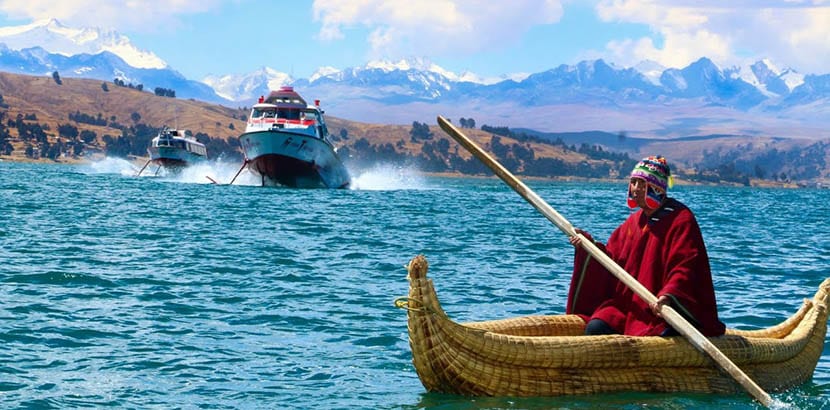
Just ten blocks from the main square of Puno is the huge lake and right there you can see the uros shaping the reed boats or rent a boat ride. You just have to come closer to close the deal, so it's very simple. A trip to the floating islands takes two hours. You can also hire the tour at the hotel or at an agency but it will surely cost you a bit more.
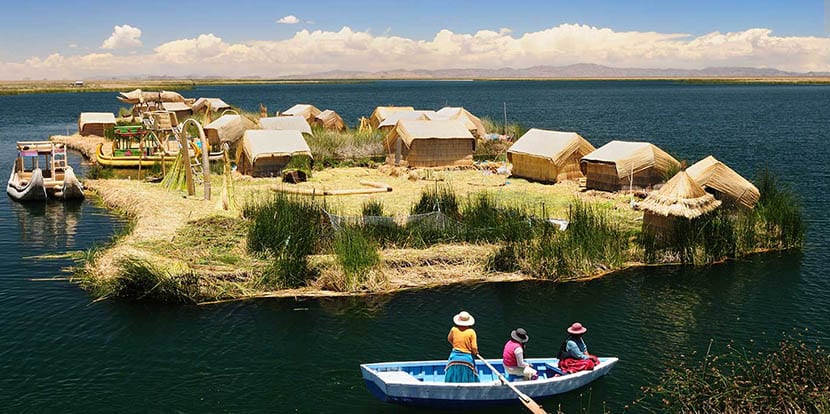
Sure, insurance includes transportation to the shore of the lake. If you want an experience that goes a little further, you can go from the Floating Islands and head towards the Taquille Island, where about two thousand people live who speak Quechua, the local language. The complete tour is extended in time because in Taquile you can visit the square with its market, do some shopping and eat something. Allow about six hours in total including the boat trip.

Alternatively spend the night on Amantani Island or do kayaking. These walks are known by the name of Titicayak and they are offered specifically in Llachón. Amantaní is a neighbor of Taquile but it is less frequented. About four thousand people live here in agricultural communities. There are archeological ruins left by the mysterious Tiahuanaco culture and a handful of excellent natural viewpoints. If yours is archeology and its mysteries, which abound around here, you can also come to know the Sillustani pre-Inca cemetery, on the shores of Lake Umayo, near Puno.
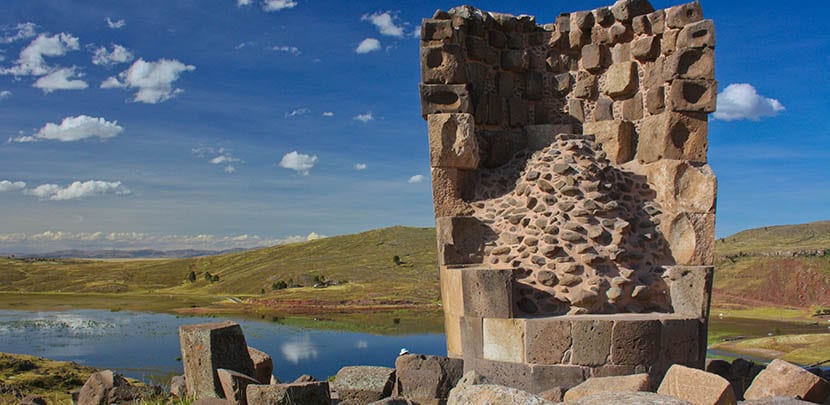
The tombs have been built in the form of towers, they are called chulipas, and belong to the Qulla culture conquered by the Incas in the XNUMXth century. Although these structures and others of the same culture are found throughout the altiplano, these, those of SillustaniaThey are the best preserved. There are like 90 of these chullpas or houses of the dead and you will see that they have been built with volcanic stones extracted from quarries that are nearby.

On the contrary, do you like nature? Then you can discover it in the Lake Titicaca National Reserve. It has two sectors, one is in the Bay of Puno and protects the reeds that are essential for local communities and the other is in the Huancané area, somewhat less visited but also rich in species and very interesting. Here are some 600 species of birds, 14 native fish and 18 types of amphibians.
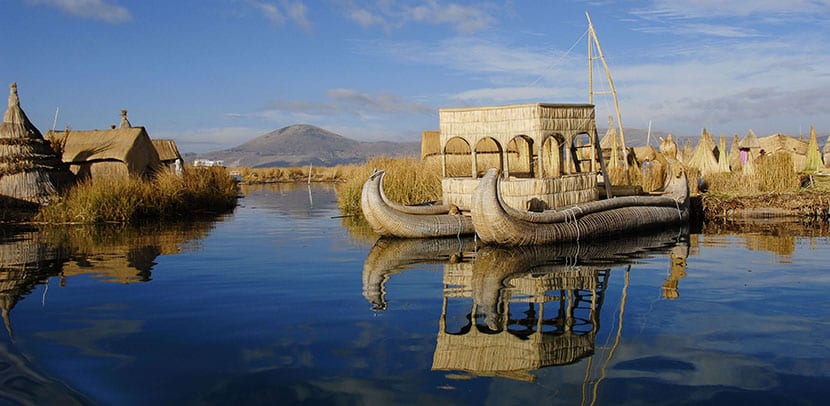
The truth is that a place this beautiful deserves a longer visit than usual, so it is a good idea to stay for a few days and let yourself soak up the local culture and feeling. You can stay on land or sleep in Taquille or Amantaní, for example. And if you are looking for something calmer there is the Anapia island, one of the five islands that are in the section of Lake Winaymarka, closest to Bolivia. The local community runs a tourism program that includes accommodation, meals, and activities.
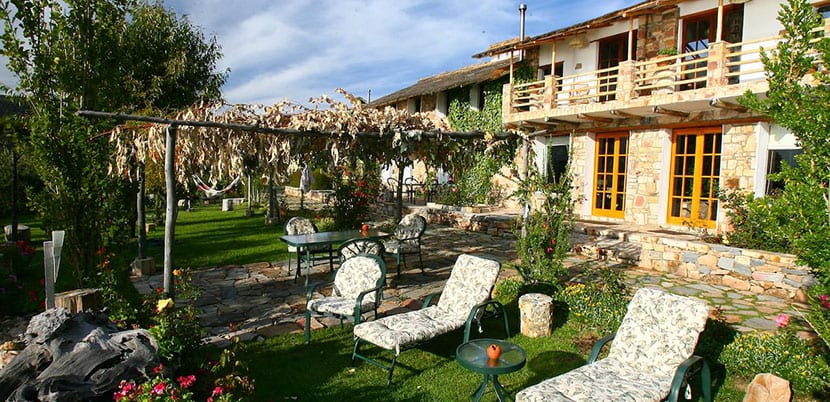
Are you not a tourist with a backpack but with a suitcase and a full bathroom? Then you can pay the visit to the Suasi Island which is the only private island on Lake Titicaca. Here it is Casa Andina, an ecological hotel that offers an all-inclusive experience in pure luxury: gourmet food, sauna, kayaking, hiking. This island is north of the lake about four hours from Puno to Juliaca in the lake's own boat. This boat stops at the floating islands of the Uros and Tauqille for you to visit.